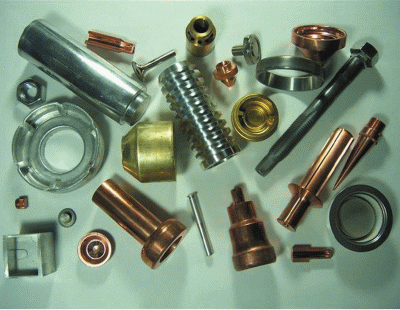 Mark Jennings, technical director at Dawson Shanahan, looks at the problem of rising material prices and explains how different metals and production techniques can offer a viable alternative to traditional machining that also deliver bottom-line benefits
Mark Jennings, technical director at Dawson Shanahan, looks at the problem of rising material prices and explains how different metals and production techniques can offer a viable alternative to traditional machining that also deliver bottom-line benefits
In recent weeks the headlines have been awash with reports of a decline in the price of copper following the catastrophic earthquake and tsunami in Japan in early March. The economic impact of the natural disaster has been made worse by the current crisis in the Middle East and North Africa, as well as Japan’s nuclear leaks, causing instability in international markets as traders find it unrealistic to keep pressing at the ever higher prices we have seen this year.
Indeed, it was only in January of this year that copper prices hit a record high of $9,728 per tonne in London trading, buoyed by strong manufacturing data from both the US and the eurozone. Analysts said prices were being lifted by expectations of high global demand in 2011 due to growing factory output and rapid economic expansion, particularly in countries such as the US, Germany and China, where demand for copper is expected to continue to grow strongly.
Even with the price of copper in debate, one thing is certain – metal prices will almost definitely continue to soar in the medium to long term. Metal comes from ore, of which there is only a finite amount, and the cost of extracting this ore is increasing year on year, owing to rising energy prices and inflation. Industry experts also state global economic growth will see demand rising particularly in China, while new uses of the metal, such as for reconstruction efforts as part of Japan’s recovery after the natural disaster, will stoke demand still further.
For those industries using high volumes of copper to produce precision parts and components, including everything from power generation and distribution, through electronics and lasers, to automotive and marine, the rising copper prices are likely to hit hard. In most applications, mill supplied Tellurium Copper (CuTE) rods or bars are usually milled, drilled or ground to produce parts and components, and while this metal machines well, these processes can generate a substantial volume of waste material that ultimately adds to costs.
For example, machining a typical Tellurium copper nozzle for use in plasma or laser welding applications, with a finished weight of 36g, requires a block of metal weighing 213g from which the shape can be milled. Accordingly, this generates 177g of waste material, over 80 per cent of the total starting weight. At today’s copper prices, this equates to well over £1 of wasted material per component, which does not make sound business sense, and even less so when you consider this metal is becoming increasingly difficult to source, as more and more companies choose not to produce it due to the health and safety risks associated with its manufacture, and is usually priced at a premium.
Accordingly, most businesses are looking at potential opportunities for shaving costs off their operations. In particular, many are considering a switch to lower cost materials that offer the required characteristics of the finished products, or are adopting more cost effective production methods. One option is to consider a radical change in production methods, from conventional machining to precision cold forming. This process is proven, produces minimal waste and typically uses using oxygen free copper wire, which is often far more commercially viable than machining Tellurium copper. Indeed, oxygen free copper is readily available, so prices are extremely competitive, and are generally far lower than those of Tellurium copper; as importantly, precision cold forming, in many applications, produces far better results than machining thanks to its superior electrical and thermal properties.
To look at the manufacturing process itself, cold forming offers a number of important benefits for businesses. In particular, this method generates far less waste than machining, typically up to 80 per cent, because parts are extruded from a small billet of metal at ambient temperatures, so the part costs fall even further. For instance, to use the earlier example of a copper laser nozzle, only a 54g billet would be needed to produce a fully shaped part that simply requires a minimal amount of final machining, resulting in waste of just 18g or less than 10p in terms of cost.
Moreover, cold forming is much faster than conventional processes, cutting production and lead times, while the reduced energy consumption that comes with producing parts at ambient temperatures, means that this technique enables exceptionally high quality components to be manufactured. Indeed, highly polished surfaces can be achieved, often with complex internal geometries, while the mechanical properties of the metal are also enhanced as the direction of forming is aligned with that of the material’s grain structure, strengthening the part along its length.
Faced with mounting industry pressures there is a strong argument for switching methods of manufacture, particularly for higher volume components. As well as the financial gains to be had in terms of significantly lower cost component parts and reduced energy expenditure, precision cold forming enables manufacturers to produce superior quality parts quickly and simply, boosting their competitive edge and productivity still further.



